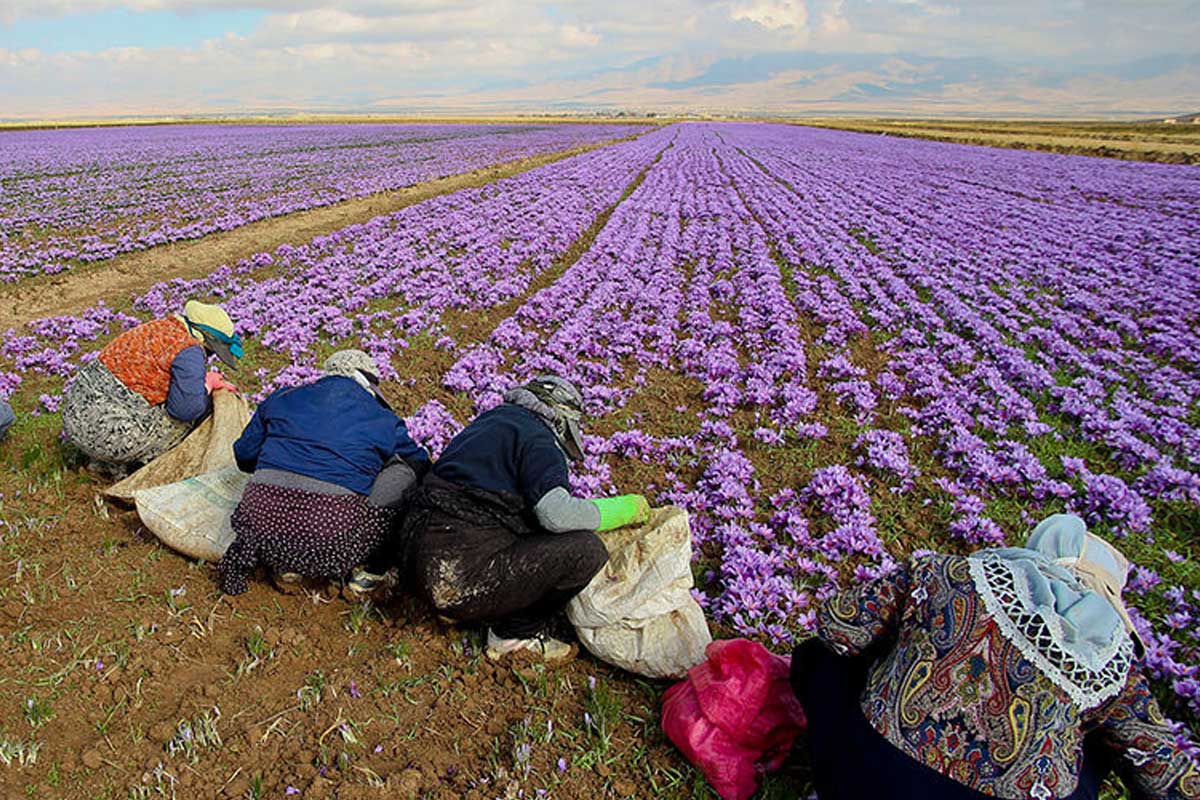Free Express International Delivery & Easy Returns
Free Express International Delivery & Easy Returns
Saffron Farming: Cultivation Techniques and Harvesting Practices

Saffron farming, also known as saffron cultivation or crocus farming, requires meticulous attention to detail and adherence to specific techniques to ensure a successful harvest of this precious spice. Let’s delve into the world of saffron farming and explore the cultivation techniques and harvesting practices employed by saffron growers around the globe.
Saffron thrives in well-drained, fertile soils with a pH range of 6.0 to 8.0. The soil should be rich in organic matter and free from excessive moisture, as waterlogged conditions can lead to bulb rot. Saffron crocus plants require a temperate climate with distinct seasons, including hot, dry summers and cold winters. Regions with Mediterranean climates, such as Iran, Spain, Greece, and Kashmir, are ideal for saffron cultivation.
Saffron crocus bulbs, also known as corms, are planted in late spring or early summer, typically in June or July, to coincide with the onset of the dormant period. The corms are planted in shallow trenches or furrows at a depth of 10 to 15 centimeters and spaced approximately 10 to 15 centimeters apart. Adequate spacing allows for proper airflow and prevents overcrowding, which can lead to disease and poor growth.
During the growing season, saffron crocus plants require regular watering to ensure optimal growth and development. However, it is essential to avoid overwatering, as excessive moisture can promote fungal diseases and bulb rot. Drip irrigation systems or furrow irrigation techniques are commonly used to deliver precise amounts of water directly to the root zone while minimizing water wastage.
Weed control is crucial in saffron farming to prevent competition for nutrients and resources. Manual weeding or mechanical cultivation techniques are employed to remove weeds and grasses from the saffron fields. Additionally, saffron crocus plants are susceptible to pests such as aphids, thrips, and spider mites, which can damage the foliage and reduce yields. Integrated pest management (IPM) strategies, including the use of biological controls and botanical insecticides, are utilized to manage pest populations effectively.
Saffron crocus plants typically flower in the fall, usually from late September to early November, depending on the location and climate. The flowers emerge from the soil as slender, purple petals with bright orange-red stigmas protruding from the center. Harvesting saffron involves carefully handpicking the delicate stigmas from each flower shortly after they bloom. Harvesting is typically done in the early morning when the flowers are fully open and the stigmas are at their peak freshness and color intensity.
After harvesting, the saffron stigmas are carefully dried to preserve their flavor, aroma, and color. Traditionally, saffron stigmas are spread out in a single layer on screens or trays and placed in a well-ventilated area to air dry. Alternatively, saffron can be dried in specialized drying rooms or dehydrators at low temperatures to expedite the drying process. Once dried, the saffron stigmas are packaged and stored in airtight containers to protect them from moisture, light, and air until they are ready for sale or consumption.
Saffron farming requires a combination of expertise, dedication, and patience to produce high-quality saffron. From soil preparation and bulb planting to irrigation, pest management, and harvesting, each step in the cultivation process plays a crucial role in determining the success of the saffron crop. By employing sound agricultural practices and adhering to time-tested techniques, saffron growers can cultivate this precious spice with care and precision, ensuring its continued availability and excellence for generations to come.
Please feel free to contact us for any inquiries related to Saffron.
Copyright © 2024 Zaflore.